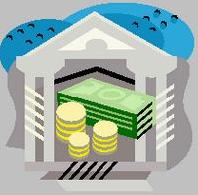
 |
|
| Financial Terms | |
| Fixed asset turnover ratio |
|
Information about financial, finance, business, accounting, payroll, inventory, investment, money, inventory control, stock trading, financial advisor, tax advisor, credit.
Main Page: money, accounting, payroll, inventory control, tax advisor, inventory, business, financial, |
Definition of Fixed asset turnover ratio
Fixed asset turnover ratioThe ratio of sales to fixed assets.
Related Terms:Fixed Assets Turnover RatioA measure of the utilization of a company's fixed assets to Accounts receivable turnoverThe ratio of net credit sales to average accounts receivable, a measure of how Acid-test ratioAlso called the quick ratio, the ratio of current assets minus inventories, accruals, and prepaid Acquisition of assetsA merger or consolidation in which an acquirer purchases the selling firm's assets. Appraisal ratioThe signal-to-noise ratio of an analyst's forecasts. The ratio of alpha to residual standard Articles of incorporationLegal document establishing a corporation and its structure and purpose. AssetAny possession that has value in an exchange.  Asset/equity ratioThe ratio of total assets to stockholder equity. Asset/liability managementAlso called surplus management, the task of managing funds of a financial Asset activity ratiosratios that measure how effectively the firm is managing its assets. Asset allocation decisionThe decision regarding how an institution's funds should be distributed among the Asset-backed securityA security that is collateralized by loans, leases, receivables, or installment contracts Asset-based financingMethods of financing in which lenders and equity investors look principally to the Asset classesCategories of assets, such as stocks, bonds, real estate and foreign securities. Asset-coverage testA bond indenture restriction that permits additional borrowing on if the ratio of assets to Asset for asset swapCreditors exchange the debt of one defaulting borrower for the debt of another  Asset pricing modelA model for determining the required rate of return on an asset. Asset substitutionA firm's investing in assets that are riskier than those that the debtholders expected. Asset substitution problemArises when the stockholders substitute riskier assets for the firm's existing Asset swapAn interest rate swap used to alter the cash flow characteristics of an institution's assets so as to Asset turnoverThe ratio of net sales to total assets. Asset pricing modelA model, such as the Capital asset Pricing Model (CAPM), that determines the required AssetsA firm's productive resources. Assets requirementsA common element of a financial plan that describes projected capital spending and the Capital asset pricing model (CAPM)An economic theory that describes the relationship between risk and Capital rationingPlacing one or more limits on the amount of new investment undertaken by a firm, either Capitalization ratiosAlso called financial leverage ratios, these ratios compare debt to total capitalization  Cash flow coverage ratioThe number of times that financial obligations (for interest, principal payments, Cash flow from operationsA firm's net cash inflow resulting directly from its regular operations Cash ratioThe proportion of a firm's assets held as cash. Common stock ratiosratios that are designed to measure the relative claims of stockholders to earnings Concentration accountA single centralized account into which funds collected at regional locations Concentration servicesMovement of cash from different lockbox locations into a single concentration Controlled foreign corporation (CFC)A foreign corporation whose voting stock is more than 50% owned Conversion ratioThe number of shares of common stock that the security holder will receive from CorporationA legal "person" that is separate and distinct from its owners. A corporation is allowed to own Cost-benefit ratioThe net present value of an investment divided by the investment's initial cost. Also called Coverage ratiosratios used to test the adequacy of cash flows generated through earnings for purposes of Current assetsValue of cash, accounts receivable, inventories, marketable securities and other assets that Current ratioIndicator of short-term debt paying ability. Determined by dividing current assets by current Customary payout ratiosA range of payout ratios that is typical based on an analysis of comparable firms. Days' sales in inventory ratioThe average number of days' worth of sales that is held in inventory. Debt/equity ratioIndicator of financial leverage. Compares assets provided by creditors to assets provided Debt ratioTotal debt divided by total assets. Debt-service coverage ratioEarnings before interest and income taxes plus one-third rental charges, divided Declaration dateThe date on which a firm's directors meet and announce the date and amount of the next Dividend payout ratioPercentage of earnings paid out as dividends. Dollar durationThe product of modified duration and the initial price. Domestic International Sales Corporation (DISC)A U.S. corporation that receives a tax incentive for DurationA common gauge of the price sensitivity of an asset or portfolio to a change in interest rates. Dynamic asset allocationAn asset allocation strategy in which the asset mix is mechanistically shifted in Earnings retention ratioPlowback rate. Edge corporationsSpecialized banking institutions, authorized and chartered by the Federal Reserve Board Effective durationThe duration calculated using the approximate duration formula for a bond with an Exchange of assetsAcquisition of another company by purchase of its assets in exchange for cash or stock. Expense ratioThe percentage of the assets that were spent to run a mutual fund (as of the last annual ExpirationThe time when the option contract ceases to exist (expires). Expiration cycleAn expiration cycle relates to the dates on which options on a particular security expire. A Expiration dateThe last day (in the case of American-style) or the only day (in the case of European-style) Feasible target payout ratiosPayout ratios that are consistent with the availability of excess funds to make Federal Deposit Insurance Corporation (FDIC)A federal institution that insures bank deposits. Financial assetsClaims on real assets. Financial leverage ratiosRelated: capitalization ratios. Financial ratioThe result of dividing one financial statement item by another. ratios help analysts interpret Fisher's separation theoremThe firm's choice of investments is separate from its owner's attitudes towards Fixed assetLong-lived property owned by a firm that is used by a firm in the production of its income. Fixed costA cost that is fixed in total for a given period of time and for given production levels. Fixed-annuitiesAnnuity contracts in which the insurance company or issuing financial institution pays a Fixed-charge coverage ratioA measure of a firm's ability to meet its fixed-charge obligations: the ratio of Fixed-datesIn the Euromarket the standard periods for which Euros are traded (1 month out to a year out) are Fixed-dollar obligationsConventional bonds for which the coupon rate is set as a fixed percentage of the par value. Fixed-dollar securityA nonnegotiable debt security that can be redeemed at some fixed price or according to Fixed-exchange rateA country's decision to tie the value of its currency to another country's currency, gold Fixed-income equivalentAlso called a busted convertible, a convertible security that is trading like a straight Fixed-income instrumentsassets that pay a fixed-dollar amount, such as bonds and preferred stock. Fixed-income marketThe market for trading bonds and preferred stock. Fixed price basisAn offering of securities at a fixed price. Fixed-price tender offerA one-time offer to purchase a stated number of shares at a stated fixed price, Fixed-rate loanA loan on which the rate paid by the borrower is fixed for the life of the loan. Fixed-rate payerIn an interest rate swap the counterparty who pays a fixed rate, usually in exchange for a Foreign Sales Corporation (FSC)A special type of corporation created by the Tax Reform Act of 1984 that Freddie Mac (Federal Home Loan Mortgage Corporation)A Congressionally chartered corporation that Funding ratioThe ratio of a pension plan's assets to its liabilities. Funds From Operations (FFO)Used by real estate and other investment trusts to define the cash flow from Hard capital rationingCapital rationing that under no circumstances can be violated. Hedge ratio (delta)The ratio of volatility of the portfolio to be hedged and the return of the volatility of the Income statement (statement of operations)A statement showing the revenues, expenses, and income (the Intangible assetA legal claim to some future benefit, typically a claim to future cash. Goodwill, intellectual Interest coverage ratioThe ratio of the earnings before interest and taxes to the annual interest expense. This Inventory turnoverThe ratio of annual sales to average inventory which measures the speed that inventory Irrational call optionThe implied call imbedded in the MBS. Identified as irrational because the call is Leverage ratiosMeasures of the relative contribution of stockholders and creditors, and of the firm's ability Liquid assetasset that is easily and cheaply turned into cash - notably cash itself and short-term securities. Liquidity ratiosratios that measure a firm's ability to meet its short-term financial obligations on time. Long-term assetsValue of property, equipment and other capital assets minus the depreciation. This is an Long-term debt ratioThe ratio of long-term debt to total capitalization. Long-term debt to equity ratioA capitalization ratio comparing long-term debt to shareholders' equity. Low price-earnings ratio effectThe tendency of portfolios of stocks with a low price-earnings ratio to Limitation on asset dispositionsA bond covenant that restricts in some way a firm's ability to sell major assets. Related to : financial, finance, business, accounting, payroll, inventory, investment, money, inventory control, stock trading, financial advisor, tax advisor, credit. |